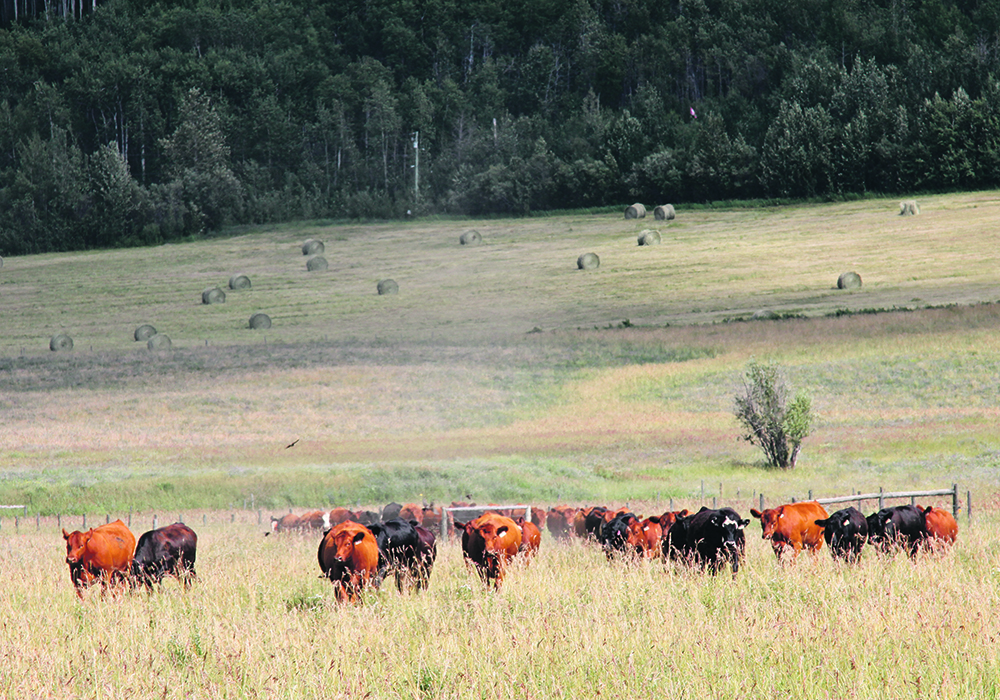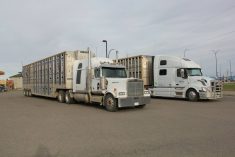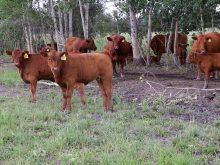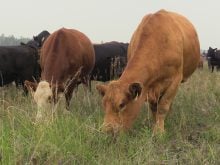Recent study finds the feed ingredient could be an economical way to keep bred heifers in good shape going into winter
ASSINIBOIA, Sask. — Adding canola meal when fall grazing cattle could be a reasonably economical way to keep bred heifers in better shape heading into winter.
Dwayne Summach, livestock and feed extension specialist with Saskatchewan Agriculture, revealed at the recent Saskatchewan Stock Growers Association annual meeting the results of a study done last fall.
The SSGA partnered with the government to run the study on two different ranches.
Summach said the idea was to demonstrate that canola meal would be a good option when forages are mature and there is less protein available.
Read Also
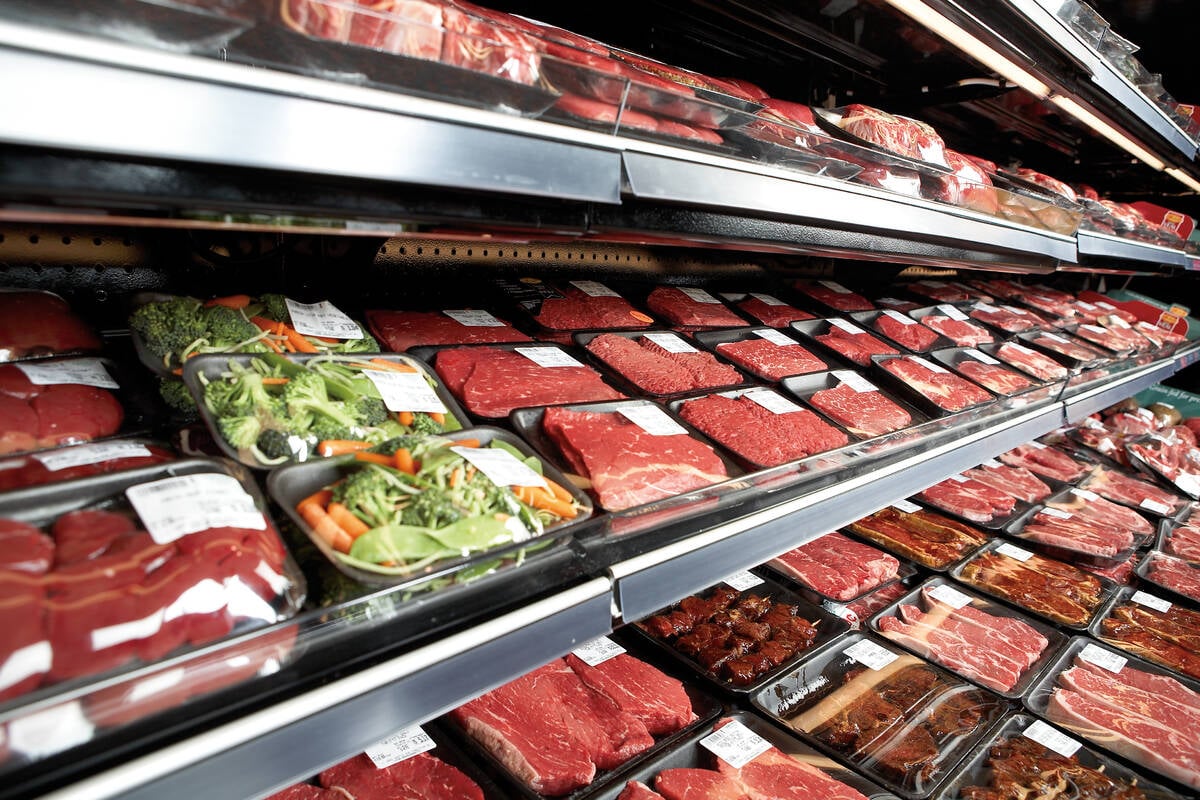
Meat and plant protein are both good for human health – McMaster study
A study from McMaster University in Hamilton, Ont. has found that meat consumption doesn’t increase the risk of death.
Several new or expanded canola crush plants are expected to come online in the province in 2023, which will make more canola meal available.
“Unfortunately, if it can be sold outside our borders for more money, that’s who you’re bidding against,” Summach said.
But producers who can get meal in the fall should see an improvement in how low-quality forage is digested, he said.
“There’s also this concept that if we help that heifer grow better, how much better a cow is she going to be over her lifetime,” he said.
Questions like that are still to be answered.
The study took place on the Burgess Ranch in the Big Muddy Valley and at Cedarlea Farms at Hodgeville, a situation Summach described as “a tale of two ranches.”
Each ranch was to provide two groups of 25 animals each. One group was the control and the other would get 1.5 kilograms of canola meal per head every other day for 60 days.
At the Burgess Ranch, where multi-sectional native grass pastures are used, the protocol varied a little in that the supplemented group got 1.39 kg of a canola meal and mineralized salt blend set out in lick barrels. The numbers of heifers also varied, with 35 bred heifers and 37 commercial bred heifers in the treatment.
The heifers grazed from Nov. 7 to Jan. 11 on 1,920 acres each, meaning the treatment occurred for 65 days.
At Hodgeville, the heifers were in two quarter-sections of crested wheat grass across the road from each other and the supplemented group received its canola meal in a feed bunk every second day from Sept. 30 to Dec. 1.
Summach said he estimated available forage and analyzed its quality.
In the Big Muddy, there were 1,548 and 1,834 pounds per acre available in the control and supplemented pastures, respectively. The control had access to 1,525 lb. per head each day, while the treatment group had access to 627 lb.
The crested wheat grass pastures at Hodgeville had been grazed down quite a bit, with 613 lb. per acre available to the control and 764 to the supplemented heifers.
Pounds of forage available per head per day totalled 93 for the control and 116 for the treatment.
Summach said he expected to see differences given the fact that the Big Muddy groups had access to far more forage. The forage analysis found little difference among the sites, with about 93 percent dry matter and six percent crude protein.
However, there were other variables at play.
The study observed that the black heifers used to grazing in the large native grass sections didn’t all come when the canola meal barrels were set out, so some ate more than others.
The Charolais heifers on crested wheat grass, on the other hand, came to the trough as soon as the canola was added.
The Charolais heifers were bigger to begin with, at about 1,300 lb. in both groups. The black heifers were just more than 900 lb.
Summach said the supplemented heifers on both ranches gained more weight over the course of the study.
Average daily gain at Hodgeville was 1.47 lb. for the control and 1.86 lb. for the supplemented animals.
At Big Muddy, the average daily gain was .2 lb. for the control and .51 lb. for the others.
“When I look at the two groups the supplementation added an extra .3 lb.,” Summach observed.
In terms of cost, Summach calculated pasture costs per head at $1.30 on the native grass and $1.75 on the crested wheat grass. The cost of the canola supplement was 48 cents per head on native grass and 46 cents on crested wheat grass.
That puts the total cost at Burgess Ranch at $1.78 per head per day and $2.21 per day at Cedarlea Farms.
Summach said the cost per pound of gain was $7.67 in the control and $4.14 in the treatment at Burgesses.
“These aren’t awesome numbers if you’re in feedlot but for maintaining bred heifers it’s definitely in the ballpark,” he said.
“Yeah, it costs you more,” to feed canola, he said. “You’ve got to put some money into them but the cost of pound of gain goes down because they grow faster.”
On the crested wheat grass the cost per pound of gain was $1.18 and $1.19 , respectively. Summach said that’s likely because the grazing was done earlier in the fall.
He said the producers will have to watch now to see whether there is a difference in breed-back. Data wasn’t yet available on whether calf size was affected by the supplementation.
He said the study shows the potential to use canola meal, particularly in fall and the dormant season when producers often put out lick tubs.
“I would argue at 45 cents a head you’re actually getting more nutritional bang for your buck from something like canola than you are from a lick tub,” said Summach, noting producers do give up some convenience because they go to the pasture every other day to feed it.


